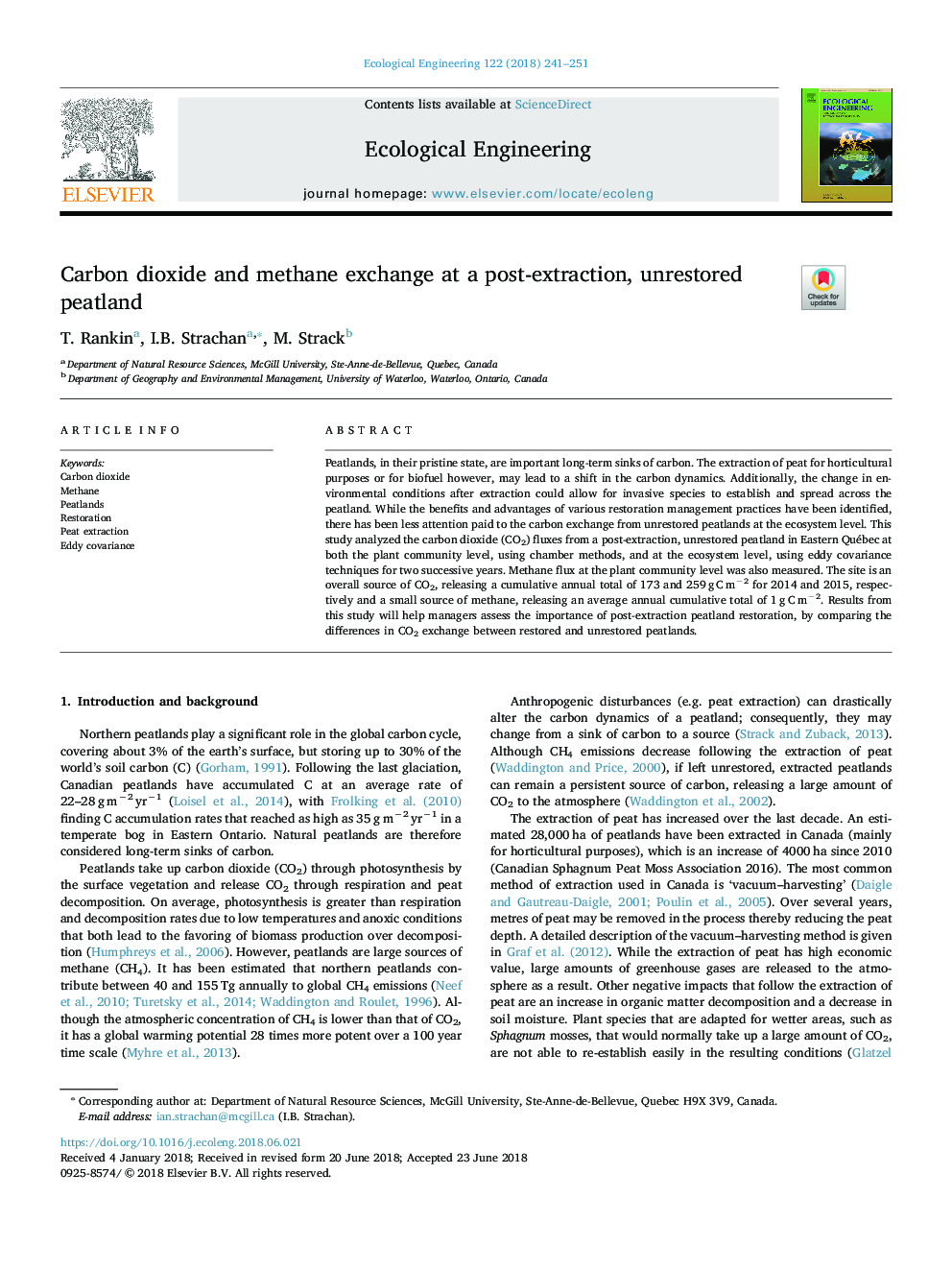| Article ID | Journal | Published Year | Pages | File Type |
|---|---|---|---|---|
| 8847742 | Ecological Engineering | 2018 | 11 Pages |
Abstract
Peatlands, in their pristine state, are important long-term sinks of carbon. The extraction of peat for horticultural purposes or for biofuel however, may lead to a shift in the carbon dynamics. Additionally, the change in environmental conditions after extraction could allow for invasive species to establish and spread across the peatland. While the benefits and advantages of various restoration management practices have been identified, there has been less attention paid to the carbon exchange from unrestored peatlands at the ecosystem level. This study analyzed the carbon dioxide (CO2) fluxes from a post-extraction, unrestored peatland in Eastern Québec at both the plant community level, using chamber methods, and at the ecosystem level, using eddy covariance techniques for two successive years. Methane flux at the plant community level was also measured. The site is an overall source of CO2, releasing a cumulative annual total of 173 and 259â¯gâ¯Câ¯mâ2 for 2014 and 2015, respectively and a small source of methane, releasing an average annual cumulative total of 1â¯gâ¯Câ¯mâ2. Results from this study will help managers assess the importance of post-extraction peatland restoration, by comparing the differences in CO2 exchange between restored and unrestored peatlands.
Related Topics
Life Sciences
Agricultural and Biological Sciences
Ecology, Evolution, Behavior and Systematics
Authors
T. Rankin, I.B. Strachan, M. Strack,
